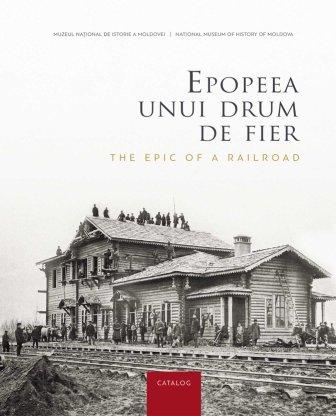This catalog was created in order to make public the most important values from the collections of the National Museum of History of Moldova, in particular, lesser-known cultural goods that are not included in the permanent exhibition. It is our duty to safeguard and manage the treasures of museum collections in a way that makes them more accessible and useful to those interested in cultural values and quality information about them, in order to help people better understand our cultural heritage. Thus, links can be created between heritage, education and culture, between the past and the present.
The importance of this work is that it makes available to a wide audience a set of photographs of special cultural and historical relevance, collected in a splendid old album "Bender - Galati Military Railway", that was created in the last quarter of the 19th century by photographer Joannis Antonopoulo. They say that history is more captivating when we see it in images. And the photos gathered between the covers of this album represent a unique source of documents on the construction of the Bender (Tighina) - Galati railway in nineteenth-century Bessarabia in a record time of only three months. The 112 old documentary photographs step by step show the process of creating a 305 km railway line that connected Tighina with the Danube port of Galati: the execution of earthworks, construction of bridges, railway stations and depots, pumping stations and water towers, etc. The value of the photographs is also associated with the name of Alexander Bernardazzi, a notorious figure of the second half of the 19th century and early 20th century, who participated in the construction of the Bender (Tighina) - Galaţi railway line as an architect of wooden buildings.
The album from the museum collection is little-known and notable for its rarity; only 32 photographs that can be found on its pages were presented at an anniversary exhibition1. This exhibition attracted the attention of the general public, as well as researchers, museographers and collectors from the country and abroad who took a particular interest in this precious documentary photographic source. It was their professional interest that prompted us to prepare and publish this catalog. The photographic images reflected in the catalog attract not only by the fact that they keep fragments of the chronicle of the 144-year-old railway object, but also by the level of photographic art that appeared just in the second half of the nineteenth century, expressive and reliably conveying reality, having the effect of spatiality and depth. Along with the rich illustrative material, the publication contains detailed information about the old album "Bender - Galati Military Railway" and its creator, photographer Joannis Antonopoulo, as well as a brief history of the construction of the Bender (Tighina) - Galaţi railway line, thus contributing to the history of the railways of the Republic Moldova.
The catalog "The epic of a railroad: Bender (Tighina) - Galaţi" is an illustrated travel guide into the past, to the origins of railway transport in the 19th century Bessarabia.


















































